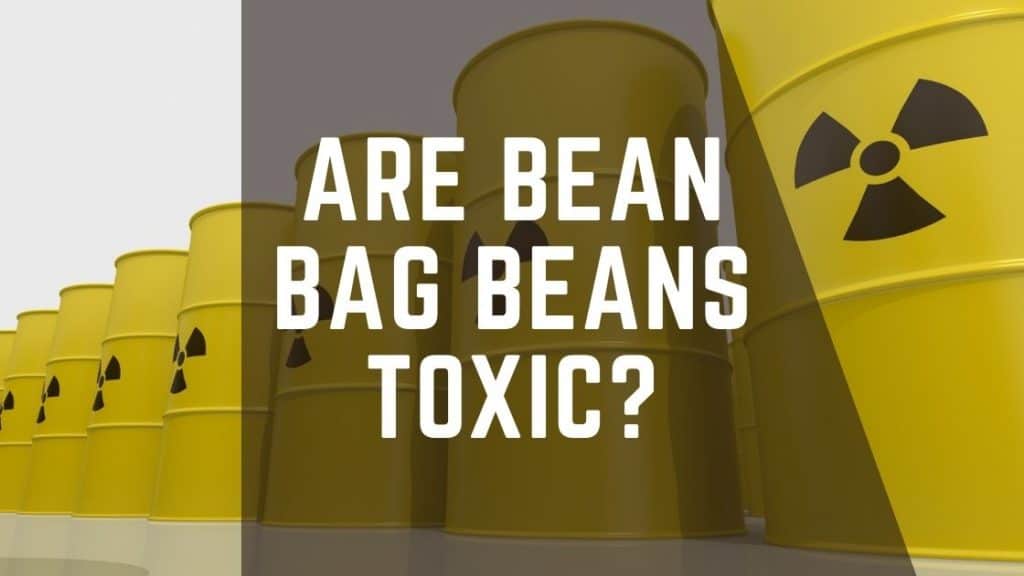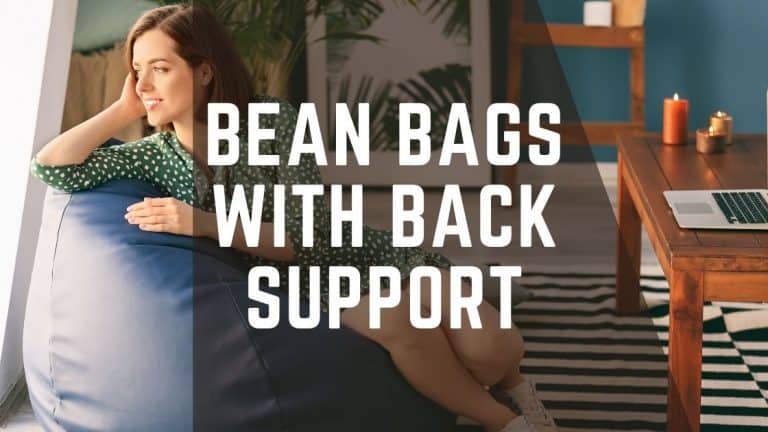Are Bean Bag Beans Toxic? – Read Before Purchase
In the present, the general public is aware of toxicity in consumer products. So several people asked me about the toxicity of bean bag beans.
Even though manufacturers use several chemicals when producing bean bag beans, generally, bean bag beans are not toxic as we work with small amounts in bean bags. But always read the safety labels of the bean bags when purchasing them.
So, here we scientifically explain all critical information about bean bag beans and toxicity. This information will help you to select the safest bean bag and the filling for your bean bag.

Table of Contents
Toxicity of the Different Bean Bag Beans
Expanded Polystyrene Balls (EPS beans)
Most bean bag users have doubts about “are polystyrene beads safe?” So, let’s check the compound used to prepare expanded polystyrene beads.
Styrene
A small amount of styrene has consisted in the bean bag balls. Also, these are residual vinyl benzene. That’s why people are saying bean bags balls have the potential to be toxic or carcinogenic.
However, this minimal content remains around seven days after it is produced. Therefore, when bean bags come into the user, this compound is not available at balls. Moreover, due to low amounts, styrene risk seems negligible.
Further, according to the American Conference of Industrial Hygienists (ACGIH), the danger is non-existent unless styrene concentration goes over 20 ppm.
On the other hand, according to the center U.S. Centers for Disease Control (CDC), toxic substances enter the body when inhaled, ingested, or touched as a liquid.
Also, styrene concentrations should be 1000 times higher than the present level to harm users.
But some kids inhale or ingest beanballs accidentally. It is the only risk. However, now all modern bean bags come with safety features.
Moreover, ACGIH states that a small amount of styrene is not classified as a human carcinogen. Also, International Agency for Research on Cancer (IARC) said that it is only a possible carcinogen.
Further, the government authorities named Environmental Protection Agency (EPA) and U.S. Centers for Disease Control (CDC) informed standard bean bag filling is perfectly safe.
Therefore, if you are willing to buy a bean bag, you do not need to believe myths.
Memory Foam
Memory foam is a polyurethane foam type. Also, chemicals are added to increase their viscosity and elasticity under pressure. It generally includes polyols, diisocyanates, and blowing agents.
Most people are complaining of some distinct odor coming from the memory foam. Also, studies show that memory foam can be a health hazard because of off-gassing.
Off-gassing is releasing an unpleasant odor. This may happen because of volatile organic compounds in memory foam. So, let’s check why memory form emits this unpleasant smell.
Generally, this smell is the result of a combination of chemical ingredients in memory foam products. These chemicals are,
Acetone
Acetone is toxic when anyone inhales it in large volumes.
Dimethylformamide
Exposure to this chemical may cause organ damage.
Methyl Benzene
The inhalation of methylbenzene may damage the human central nervous system.
Vinylidene Chloride
This substance can irritate the respiratory system. Also, it is a suspected carcinogen.
Therefore, if any product includes memory foam, it should have California state’s Proposition 65 warning label.
However, these days manufacturers go for quality raw materials rather than petroleum derivatives.
Moreover, there are quality certification companies, and most memory foam manufacturers go through their safety standards.
Thus, choose a bean bag with memory foam that is made with safety standards. Then, you do not need to worry about shredded memory foam toxicity.
Packing Peanut
Packing peanuts are made with petroleum-based materials and starch-based materials. Because of that, some people assume packing peanuts must be toxic.
However, there are no records to prove that packing peanuts are toxic. Thus, bean bags filled with packing peanuts are safe as bean bags filler beads.

Other Filler Beads
Generally, cotton and other eco-friendly filler beads such as rice, hay, and pebbles are not recorded as toxic. Or else there is no evidence to say these contain any toxic compound. Thus, you can select these filler types without any fear.
However, some people ask if the cotton has toxic? Generally, raw cotton has not toxic. But it will depend on the manufacturer’s processing way.
Therefore, if you want to go for a safe bean bag filler type, select a product that produces with safety standards.
Safety Labels
Some bean bags include safety labels stating that the products’ materials may be toxic or cause cancer. But note that this possible safety hazard does not apply to all beanbags.
California Warning Labels
Did you see this tag label in any consumer goods?
WARNING: This product comprises chemicals recognized by the State of California to cause cancer and birth defects or other reproductive harm.”
So, let’s see why some product has this warning tag and how it affects the bean bags.
California state released a new law referred to as Proposition 65. This legislation is one of the strictest ones globally, and it is also applicable to bean bags.
Hence, if any manufacturer uses any material mentioned in proposition 65 lists, it cannot sell in California without adding the above warning.
Scientists informed if any product has this label can cause cancer or congenital disabilities in one out of every 100,000 people for 70 years. So, if you this warning in a bean bag, there is a possibility to have a health hazard.
However, this legislation is only valid for California. But, some companies include this warning label in all of their products too. ‘
They believe it is cost-effective than selecting certain products that include these substances.
Vinyl Covers of Bean Bag
Now you know standards bean bag beads do not have a threat to humans. But till you may doubt bean bag fabrics. Also, most people search about whether bean bag fabrics are toxic or vinyl fabric toxic?
As mentioned above state, California has special rules. Thus, all items that contain vinyl should have the above warning label. Therefore, the bean bag made with vinyl fabric has this warning tag.
Vinyl chloride is a colorless gas that uses for upholstery for vehicles and furniture. Do you ever feel the smell of a brand new car?
Yes. That smell comes because of Vinyl chloride. However, the concentrations consist in consumer goods too small to cause damage.
Do Vinyl Covers of Bean Bags Have Any Toxic Effects?
The U.S. Environmental Protection Agency (EPA) also recognized the lousy impact of high dosage of Vinyl chloride exposures. Significantly, these circumstances mainly occur among factory workers who are highly exposed to vinyl chloride.
Therefore, bean bag owners do not need to worry about vinyl bean bags. As usual, adverse health hazards happen if you are exposed to high concentrations.
The finished bean bags have shallow vinyl chloride content because they were released shortly after being produced.
However, other than vinyl chloride, some substances produce vinyl-based products, such as diisononyl phthalate (DINP).
This agent is mainly used to enhance the material’s flexibility. However, it is also thought to have carcinogenic properties and is strongly associated with cancer.
Thus, as per Proposition 65, DINP is listed under 900 items that require warning labels.
According to California state’s Carcinogen Identification Committee (CIC), excessive exposure to DINP increases the risk of several types of cancer. These include kidney, pancreatic, uterine, blood, and bone cancers.
However, DINP properties are under review, and scientists believe they have minimal risk to consumers except if they aggregate exposure from multiple products.
Final Words
There are many fabrics and filler beads used for bean bag preparation. Among them, people have doubts about only vinyl fabric and memory foam filler.
Moreover, there are some safety labels in the bean bags that inform of the health hazards. Therefore, people have doubts about whether bean bags are safe to use or not?
Also, at the production line, manufacturers use different kinds of chemicals. But when it comes to consumer’s hand, the power of most chemicals are negligible.
Thus, don’t rely on myths. Read safety labels and understand the manufacturer’s advice. Then, use it properly. Bean bags are perfectly safe for consumers!


